Providence, RI (Pageacoag)
Project: Rhode Island Colonization and Narragansett Survivance, 1636 - present
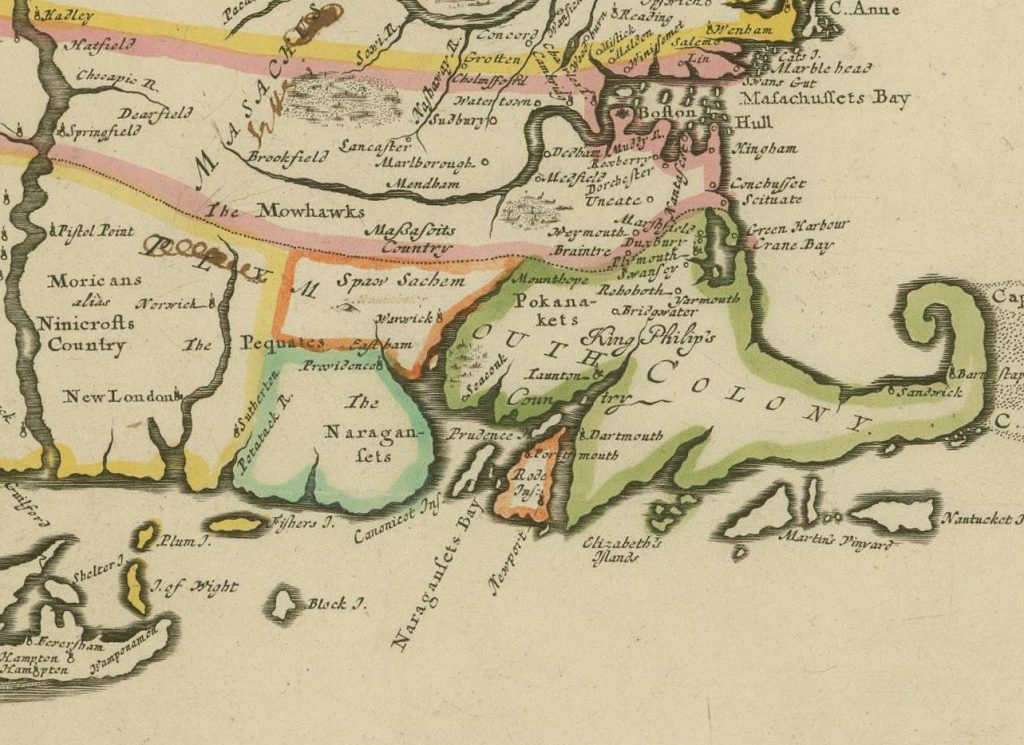
The Narragansett cultivated most of what is now Rhode island, as indicated by this 1676 map.
Courtesy of the John Carter Brown Library.
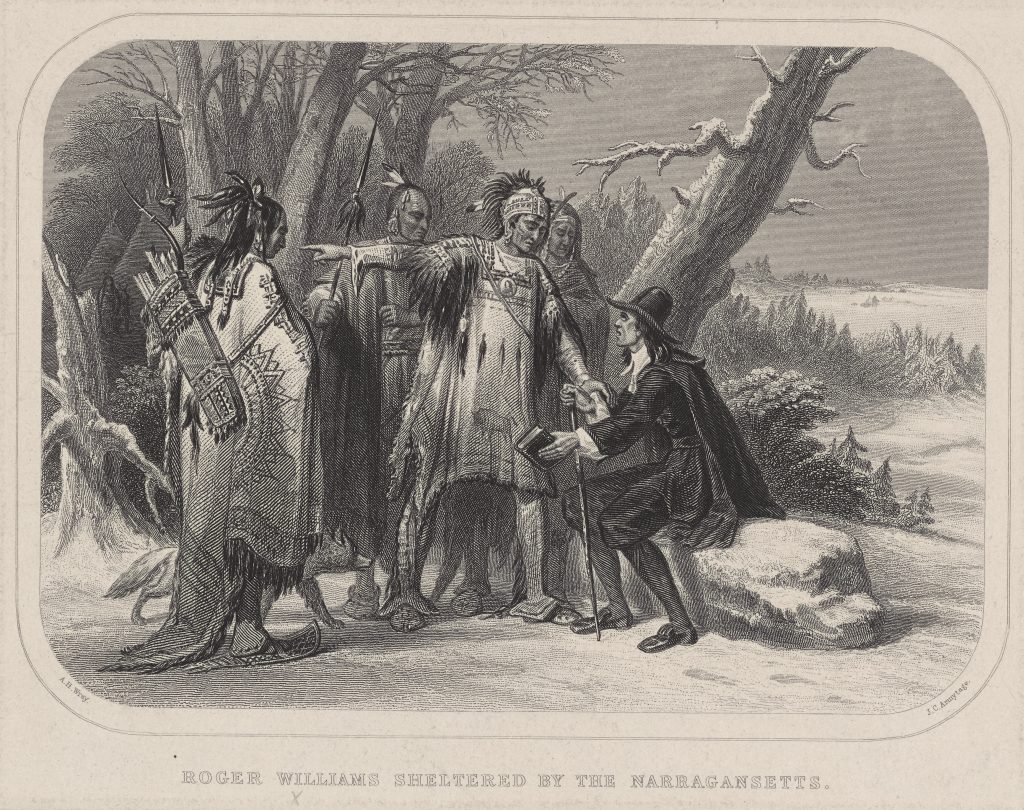
Narragansetts sheltered Roger Williams in 1636 when he arrived in what is now Providence.
Courtesy of The Miriam and Ira D. Wallach Division of Art, Prints and Photographs: Print Collection, The New York Public Library.
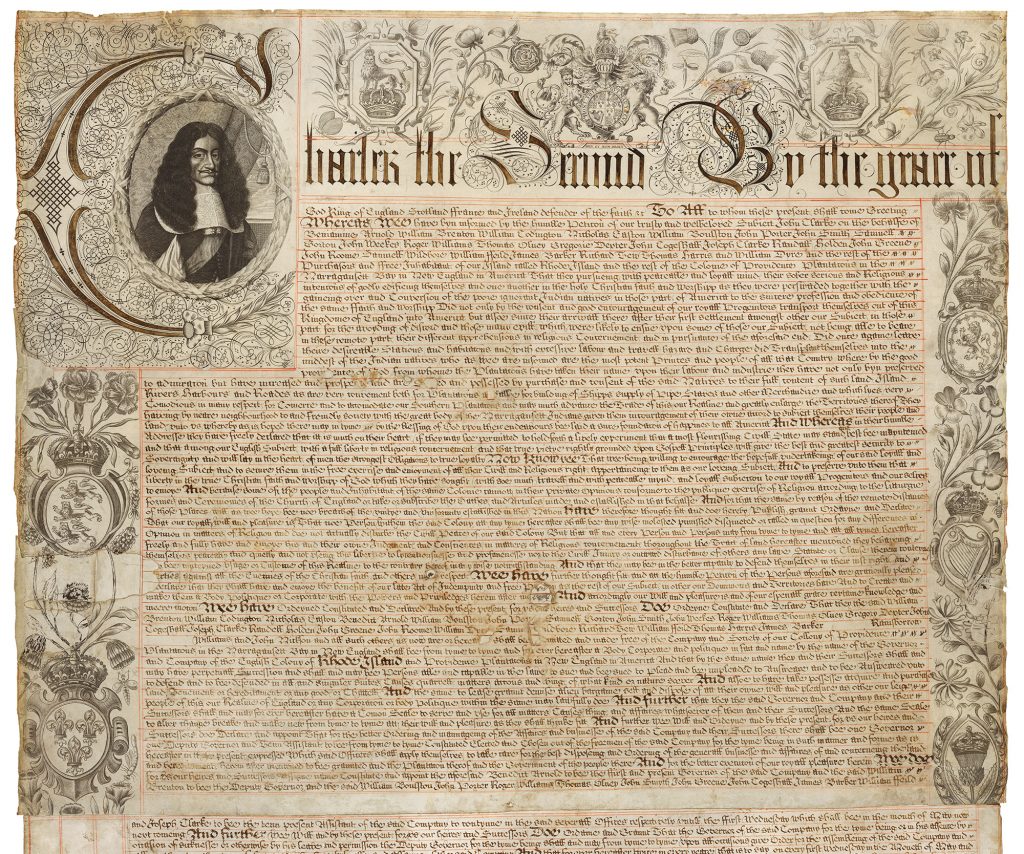
The 1663 Rhode Island Royal Charter permitted colonists to “invade and destroy the native Indians” upon “just causes.”
Courtesy of the Rhode Island State Archives.
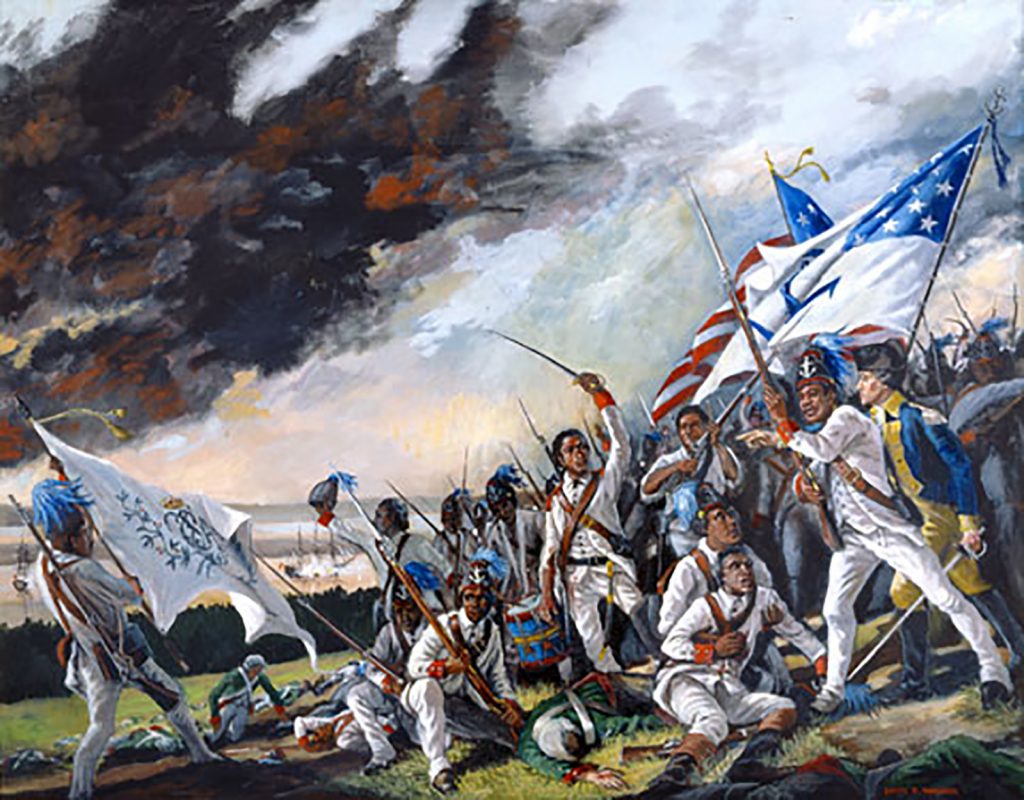
In 1781, the 1st RI Regiment, which included many Indigenous soldiers, distinguished itself during the Battle of Rhode Island.
Courtesy of David R. Wagner.

The State of Rhode Island detribalized the Narragansett nation in violation of federal law in 1880-1884, and sold their land.
Courtesy of Tomaquag Museum.
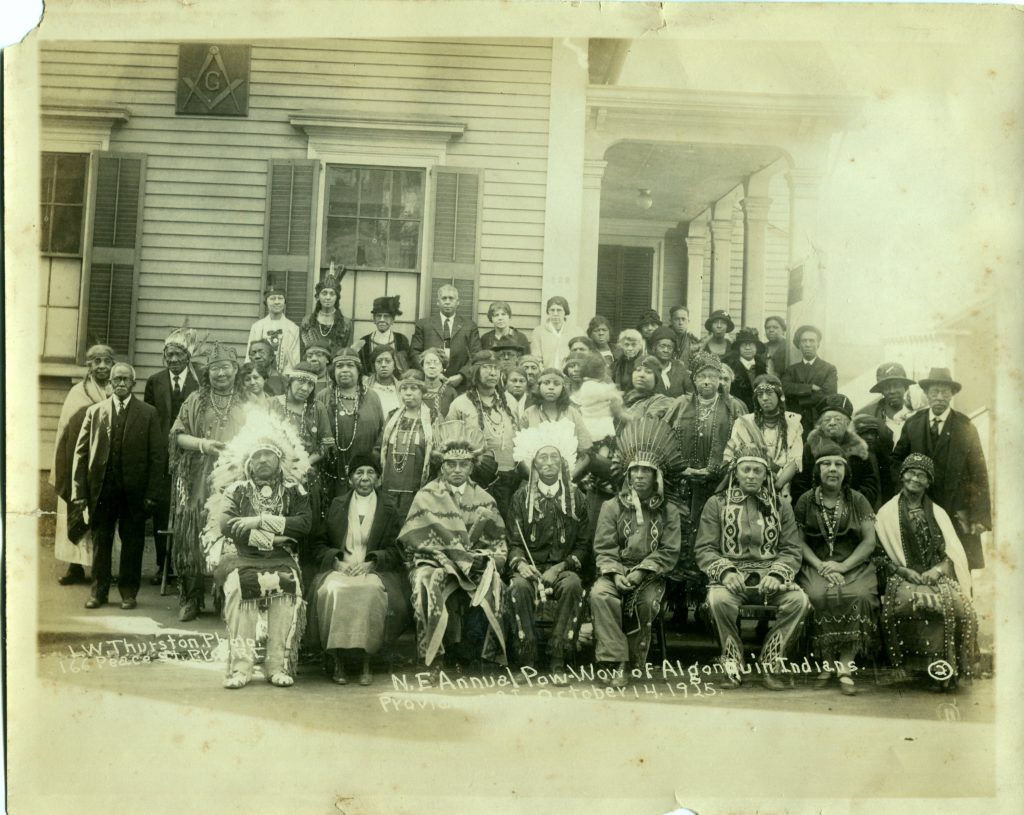
Representatives from twelve Northeast Indigenous Nations gathered in Providence in 1925 to create a New England Indian Council.
Courtesy of Tomaquag Museum.
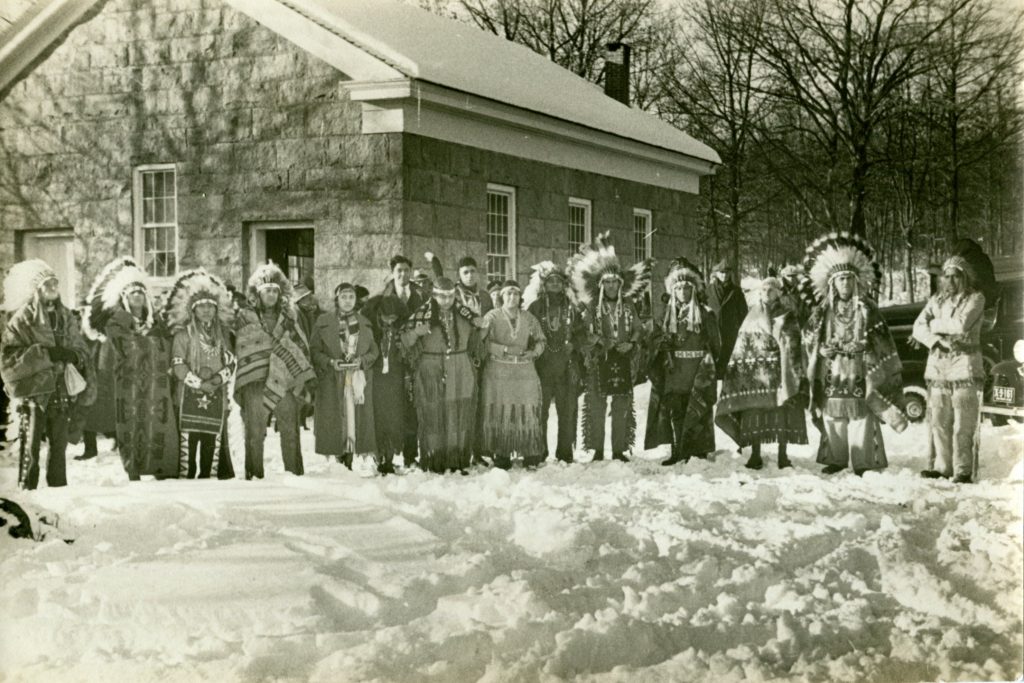
The Native community gathered at the Narragansett Indian Church after a ceremony for Chief Nighthawk in the 1930s.
Courtesy of Tomaquag Museum.
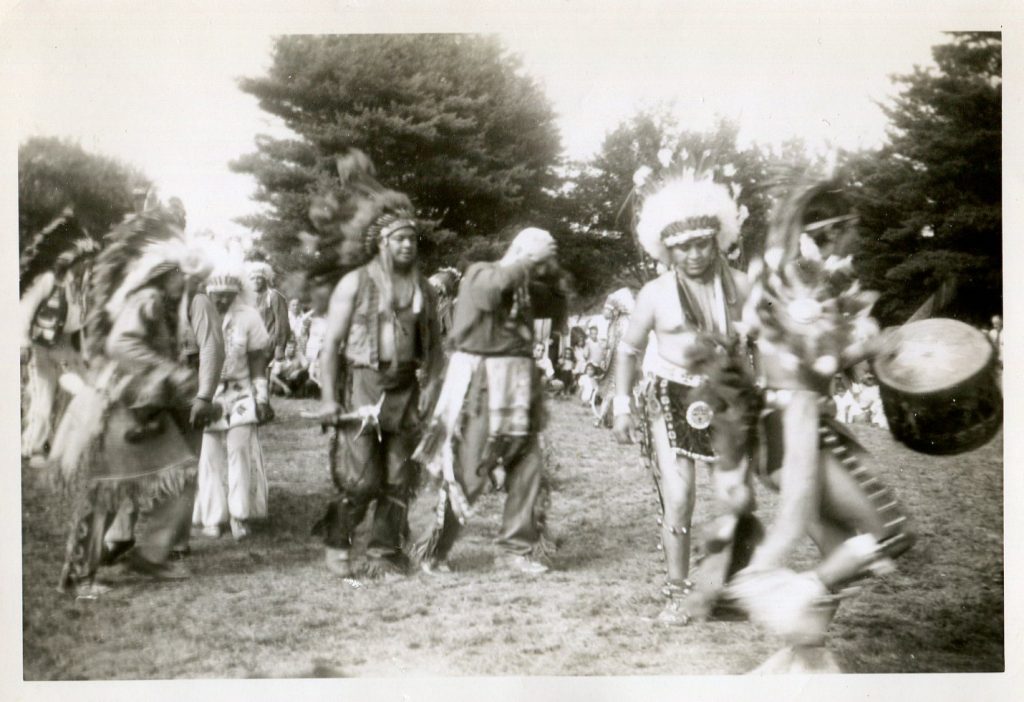
Dancers represented several Indigenous nations at the Narragansett Annual August Meeting Powwow in 1947.
Courtesy of Tomaquag Museum.
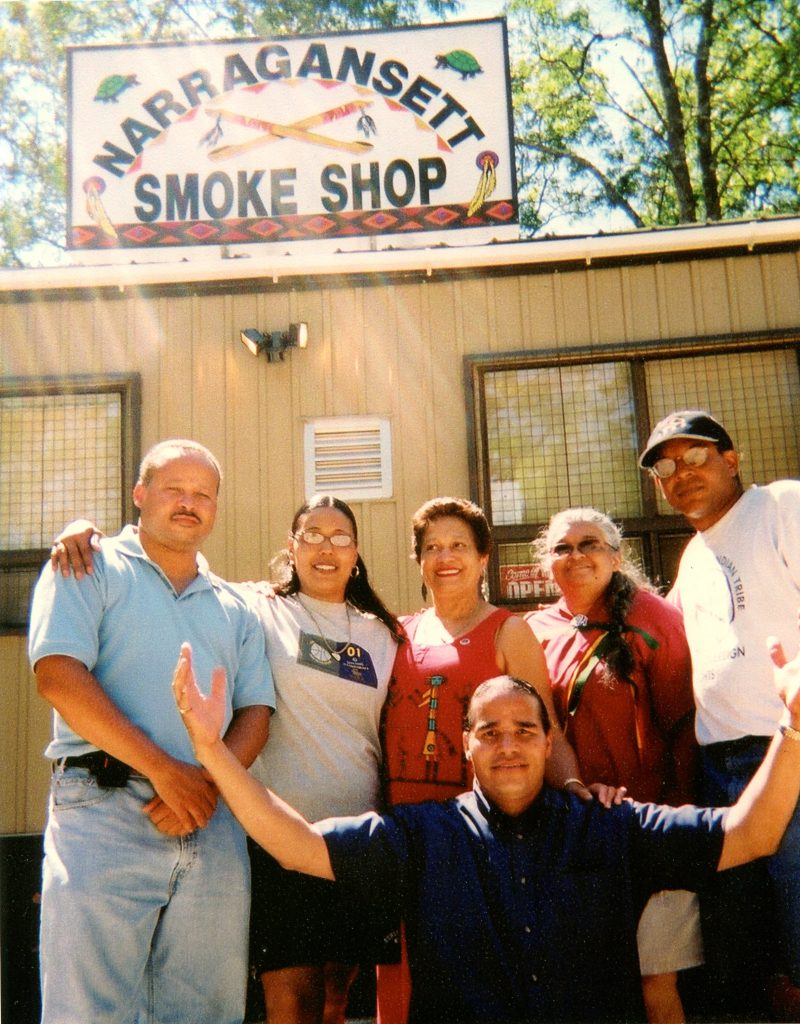
Narragansett Indian Economic Development Commissioners celebrated opening a Smoke Shop on sovereign reservation land in 2013.
Courtesy of Tomaquag Museum.
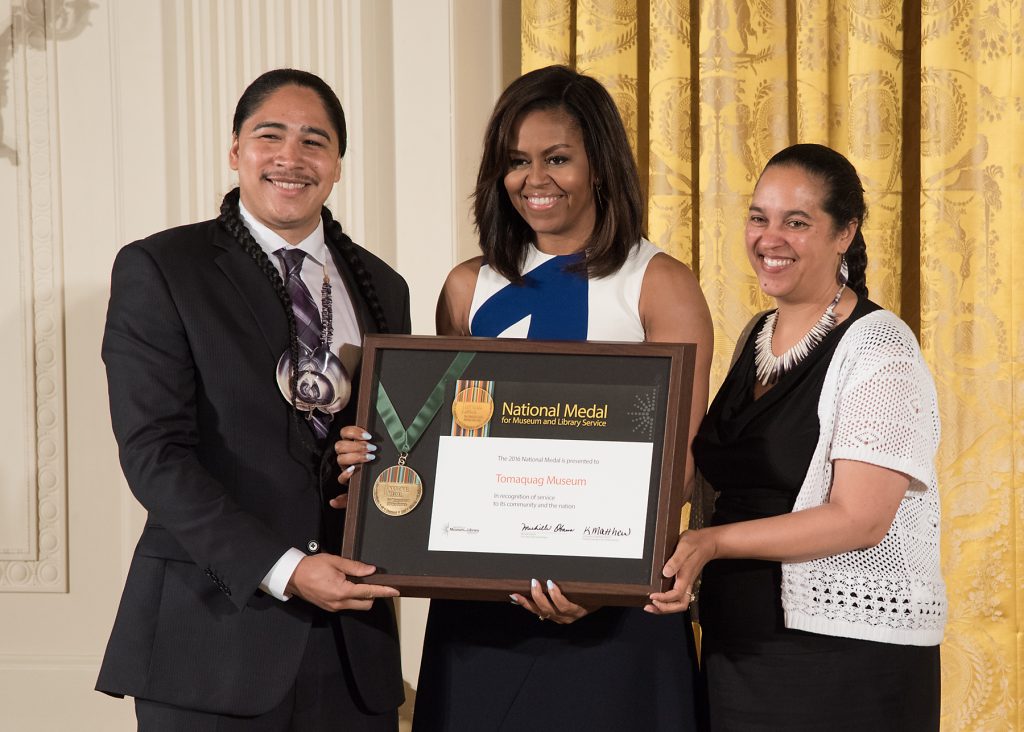
Narragansett community member Christian Hopkin and Tomaquag Museum Director Lorén Spears accept the National Medal for Museum and Library Service from First Lady Michelle Obama in 2016.
Courtesy of the Institute for Museum and Library Services.